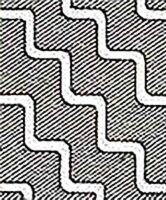Se-tenant: Numeral (Germany, Soviet Occupation of West Saxony 1945)
Numeral (Germany, Soviet Occupation of West Saxony 1945)
09 November (Germany, Soviet Occupation of West Saxony ) within release West Saxony : Numerals (Series II) goes into circulation Se-tenant Numeral face value 14 German pfennig
| Se-tenant Numeral in catalogues | |
|---|---|
| Michel: | Mi: DD WZd B16U |
Se-tenant is horizontal format.
Horizontal Mi: DD 130/Z/129, "Z" means empty stamp-sized label between the two stampsAlso in the issue West Saxony : Numerals (Series II):
- Se-tenant - Numeral face value 15;
- Se-tenant - Numeral face value 20;
- Se-tenant - Numeral face value 20;
- Se-tenant - Numeral face value 18;
- Se-tenant - Numeral face value 9;
- Se-tenant - Numeral face value 9;
- Se-tenant - Numeral face value 14;
- Se-tenant - Numeral face value 14;
- Se-tenant - Numeral face value 14;
- Se-tenant - Numeral face value 20;
- Se-tenant - Numeral face value 14;
- Se-tenant - Numeral face value 14;
- Se-tenant - Numeral face value 11;
- Se-tenant - Numeral face value 9;
- Se-tenant - Numeral face value 17;
- Se-tenant - Numeral face value 14;
- Se-tenant - Numeral face value 20;
- Se-tenant - Numeral face value 20;
- Se-tenant - Numeral face value 29;
- Se-tenant - Numeral face value 31;
- Se-tenant - Numeral face value 18;
- Se-tenant - Numeral face value 20;
- Stamp - Numeral face value 4;
- Stamp - Numeral face value 20;
- Full Pane - Numeral face value 775;
Se-tenant Numeral it reflects the thematic directions:
A number is a mathematical object used to count, measure, and label. The most basic examples are the natural numbers 1, 2, 3, 4, and so forth. Numbers can be represented in language with number words. More universally, individual numbers can be represented by symbols, called numerals; for example, "5" is a numeral that represents the number five. As only a relatively small number of symbols can be memorized, basic numerals are commonly organized in a numeral system, which is an organized way to represent any number. The most common numeral system is the Hindu–Arabic numeral system, which allows for the representation of any non-negative integer using a combination of ten fundamental numeric symbols, called digits. In addition to their use in counting and measuring, numerals are often used for labels (as with telephone numbers), for ordering (as with serial numbers), and for codes (as with ISBNs). In common usage, a numeral is not clearly distinguished from the number that it represents.

